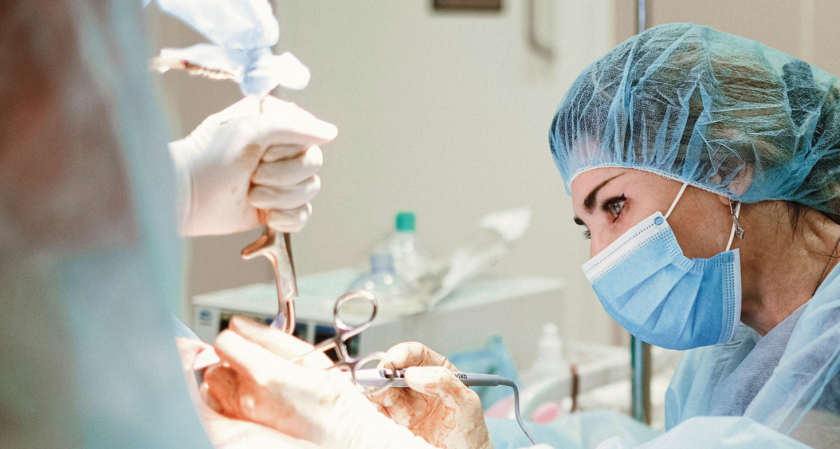Purifas Owner and CEO Ibrahim Samaan explains it all.
Patient safety is paramount in all aspects of your practice as a cosmetic surgery practitioner. With the release of the National Safety and Quality Cosmetic Surgery Standards (NSQCSS) in December 2023, the Australian Commission on Safety and Quality in Health Care (ACSQHC) has introduced significant updates to ensure all cosmetic surgery services in Australia adhere to the highest safety and quality standards.
While these changes may initially seem substantial, they are designed to enhance patient safety and improve the overall experience for both you and your clients. So, what do these new standards mean for your practice, and how can you ensure compliance? Continue reading to discover the key updates in the NSQCSS, understand the importance of these changes and learn practical steps to manage the implementation in your clinic.
Why are the new standards important?
In just five months in 2023, the Cosmetic Surgery Hotline received an eye-opening 111 calls from patients and practitioners reporting unsafe practices. This critical feedback led to the creation of the NSQCSS, designed to address safety gaps and set clear standards for cosmetic surgery clinics across Australia.
Accreditation for these services is expected to start in 2025, providing ample time to familiarise yourself with the new standards and implement the necessary updates.
Adhering to these standards will ensure that your clinic delivers the highest level of care and safety for your patients.
What do the new standards cover — and what don’t they cover?
The NSQCSS covers all facilities where invasive cosmetic procedures, like breast augmentations, liposuction, and facelifts, are performed. Due to the increased risks linked to these procedures, the standards place a strong emphasis on patient safety.
However, these standards do not extend to non-invasive treatments like injectables or other non-surgical procedures.
In conjunction with the NSQCSS, you must also be familiar with two other key documents:
- Cosmetic Surgery Module (‘the Module’). This document has been developed specifically for cosmetic surgery services already accredited to the National Safety and Quality Health Service (NSQHS) Standards. It identifies the key actions that are tailored to the cosmetic industry so that Services can demonstrate compliance to the NSQHS Standards and the Module in a single assessment process.
- Guidelines for Registered Medical Practitioners Who Perform Cosmetic Surgery and Procedures. Issued by the Medical Board of Australia, these guidelines emphasise your responsibilities and ethical obligations. They also provide further direction on patient assessment, informed consent and post-operative care.
Practitioners can refer to the Map of the Cosmetic Surgery Standards 5 to compare the cosmetic surgery standards and the NSQHS standards.
What you should focus on
The NSQCSS introduces new requirements to ensure procedures are conducted in licensed, accredited facilities. Some updates include:
- Pre-surgery psychological assessments
You must now use validated psychological screening tools to assess patients for conditions like body dysmorphic disorder. This ensures patients are mentally prepared for surgery.
- Clear patient communication
You must provide patients with comprehensive information — both verbally and in writing — about the procedure, potential risks and the recovery process. This must be communicated in a language the patient understands to enable fully informed decisions.
- Transparency in qualifications and costs
Patients should be informed about the surgeon’s qualifications, any associated costs and that Medicare does not cover cosmetic surgery.
Additionally, these standards emphasise the importance of maintaining detailed records, which is crucial for accreditation. Clinics must meticulously document all patient interactions, assessments and processes to comply with the new guidelines.
Tips for staying compliant
Navigating these changes can feel overwhelming, but with a structured approach, your practice can stay ahead of the curve. Here are some practical steps to help you manage the transition.
Appoint a compliance leader
Designate a team member — such as a practice manager or senior nurse — to oversee the implementation of the new standards. This individual will act as the primary point of contact for staff inquiries and ensure consistent compliance with procedures.
Review and update protocols
Compare your clinic’s current practices with the new NSQCSS to identify areas for improvement. For example, reevaluate how you conduct patient screenings and confirm that your informational materials are up-to-date with the latest communication standards.
Train your team
Staff training is crucial for a smooth transition. Ensure all team members understand the new standards and how they impact their day-to-day tasks.
The new NSQCSS represents a significant advancement in enhancing the safety and quality of cosmetic surgery across Australia. By familiarising yourself with the key updates and proactively implementing these changes, you will remain compliant and continue to provide high-quality care for your patients.
Read our latest issue below:
There are 5 ways you can catch up with SPA+CLINIC
- Our quarterly print magazine, delivered to your door. Subscribe here.
- Our website, which is updated daily with its own completely unique content and breaking news.
- Our weekly newsletter – free to your inbox! Subscribe here.
- Our digital magazine – click here to view previous issues.
- Our social media – see daily updates on our Instagram, Facebook & Linkedin




